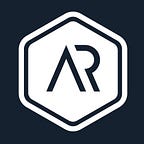Some updates about the Arcona “technical dimension”
Technical development of the Arcona project goes in several ways. We are keeping you posted about the Arcona marketplace news and telling you about milestones reached by GIS-department. Its high time to let you know about how the things are with the development of AR-content positioning in the augmented reality layer which can be accessed on location by using customer-facing app AR Viewer with mobile devices, such as smartphones, tablets, smartphones with AR headsets, standalone AR glasses and headsets like HoloLens, AR contact lenses, and others.
The Arcona AR Viewer is a free, cross-platform multi-user universal software program that enables participants to see augmented reality objects in a real-world environment.
At the moment the Arcona developers’ team is working on the process of camera calibration and the detailed manual depicting the camera settings.
For accurate positioning of objects in augmented reality, it is necessary to know the internal parameters of the camera. Focal length, angle of inclination of pixels (in most modern cameras is zero), the principal point (the point of intersection of the image plane with the optical axis), as well as distortion coefficients. To find these parameters for any specific camera, we have developed a calibration procedure.
It should be emphasized that this procedure is of great importance as most mobile cameras are notorious for the distortion referring to an image deformation, which is most pronounced towards the corners. Distortion is a deviation from a straight projection; in the presence of distortion, in fact, the straight lines in the image become curves. To get a better quality of what the user sees the device camera should be calibrated.
We have not deviated from the unspoken standards adopted in the environment of computer vision and use pictures for calibration “Chess Calibration Board”. Our procedure is different from average one, because the board does not need to be printed on a printer and attached to a flat surface. Our procedure can use the calibration board image displayed on an average monitor screen. So, when first entering our viewer, the user will be asked to take a few images of the “Chess Calibration Board” at different angles (with tips on how to properly place the camera) and start the calibration procedure, after the successful execution of which the camera parameters will be saved and the program will be ready to work. On subsequent runs, the saved settings will be automatically loaded and used.
In addition, besides working as part of a system of analysis and recognition of images, this functionality can be applied for basic correction of distortion in the user’s own images, which is cool for those who care about the way they look in the pictures.
We will be providing you with more details and description when the information becomes available.
Follow our news on the Arcona’s Telegram.
